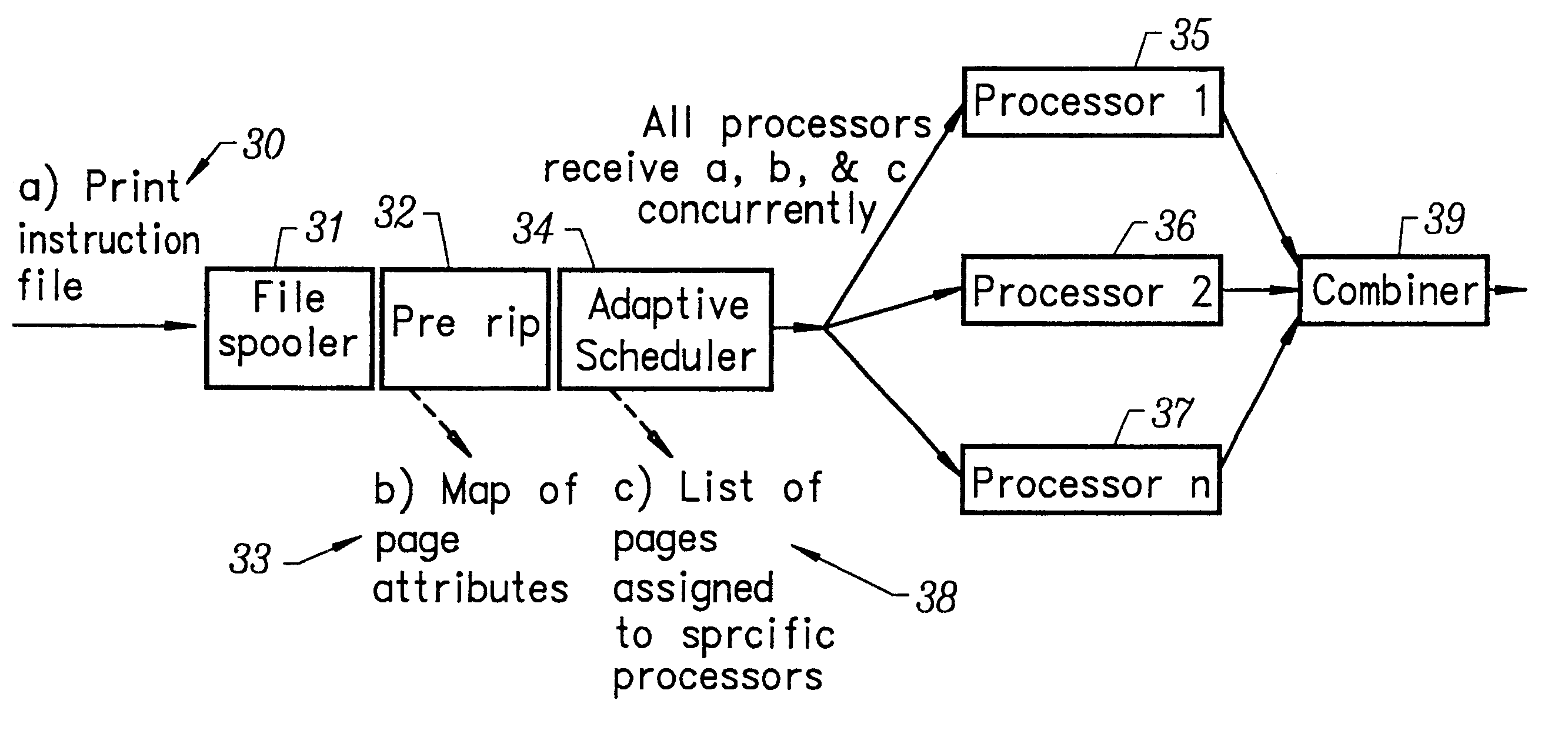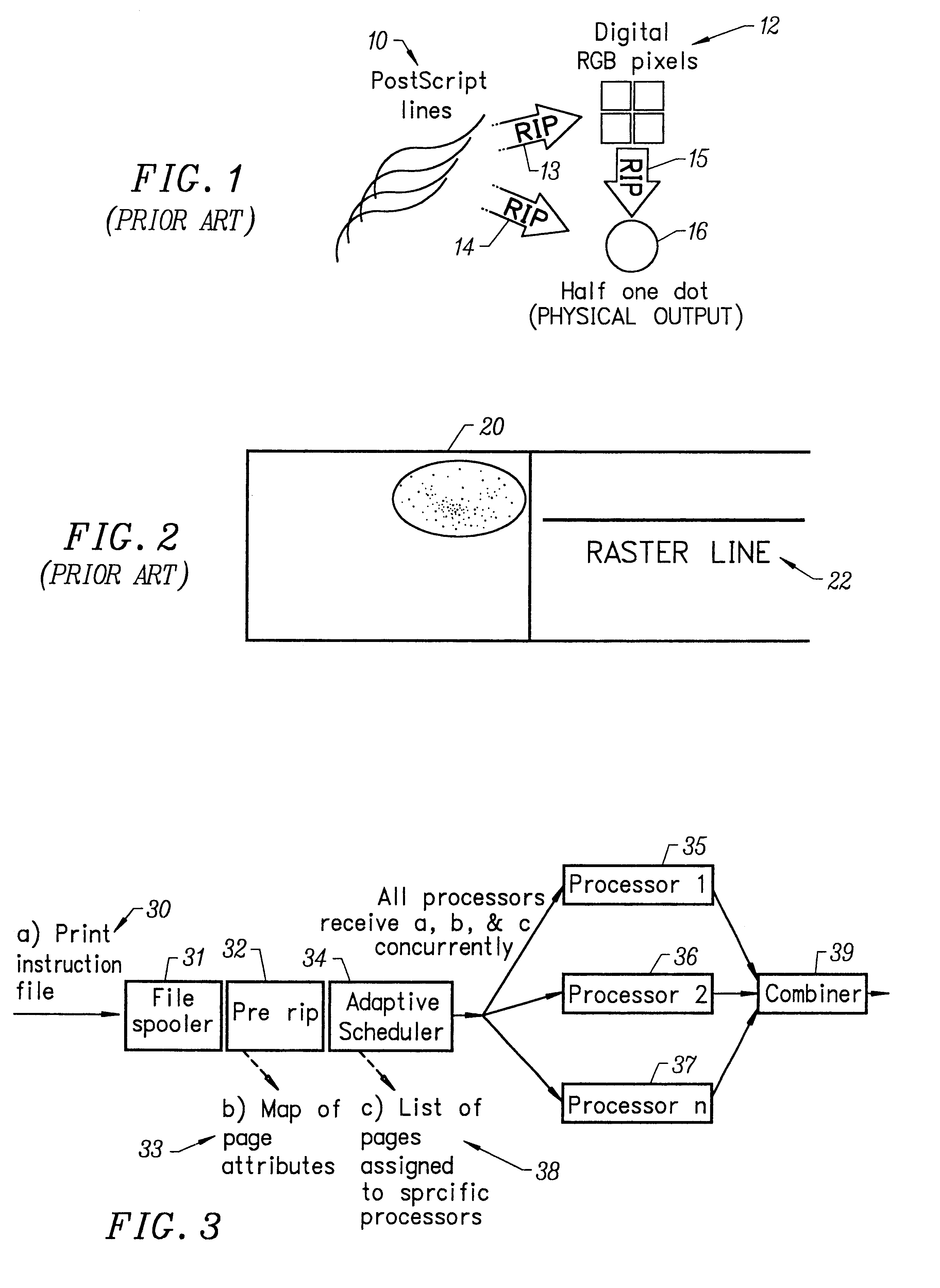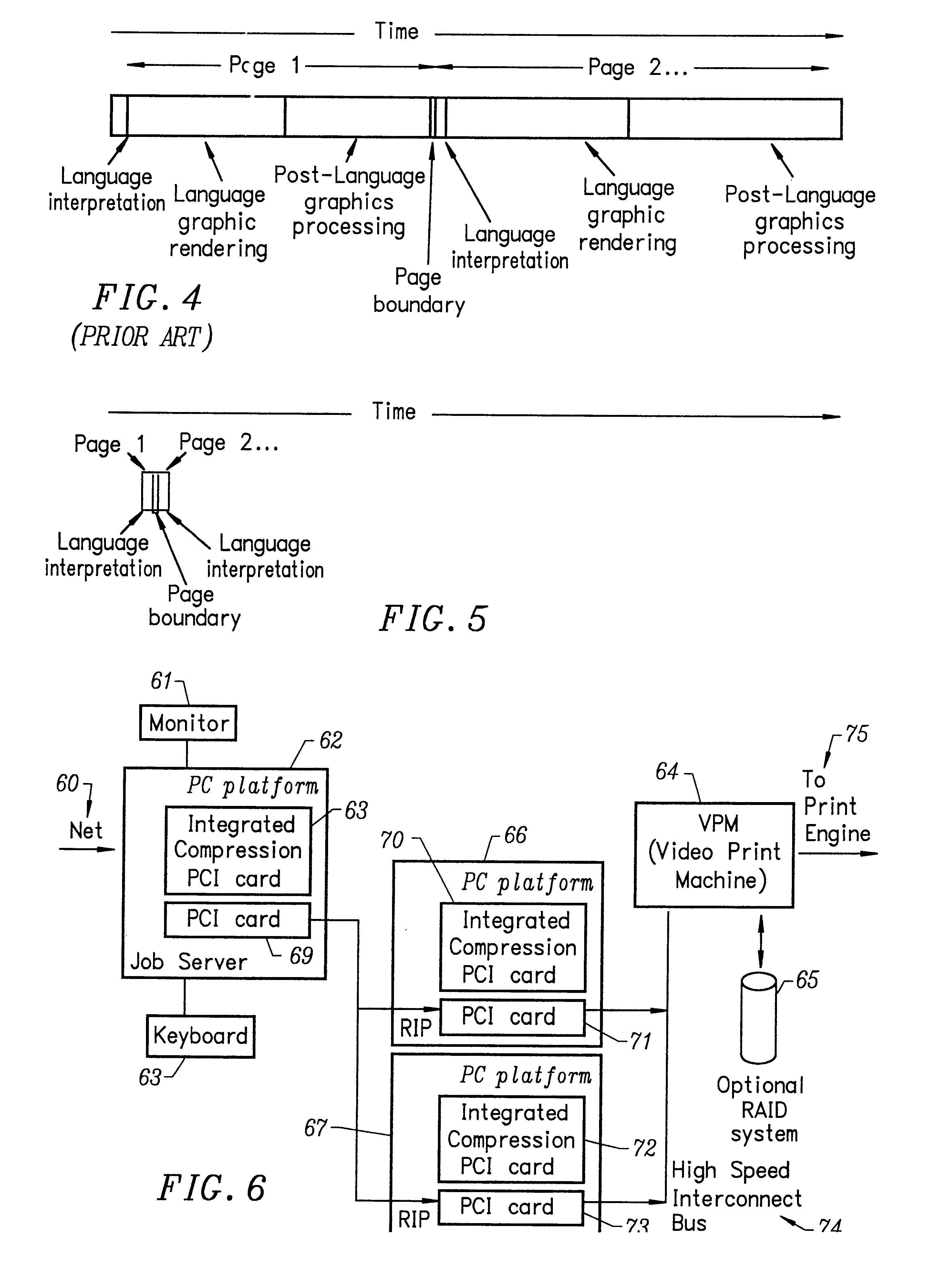Printing method and apparatus having multiple raster image processors
a printing method and image processor technology, applied in the field of images, can solve the problems of software rips that are less desirable for larger print facilities, workstations that cannot be configured to perform at speeds equal to dedicated hardware rips, and complex riping processes
- Summary
- Abstract
- Description
- Claims
- Application Information
AI Technical Summary
Benefits of technology
Problems solved by technology
Method used
Image
Examples
example 2
for incoming job load by using an adaptive algorithm. For example, if the system normally reserves one RIP for smaller jobs and dedicates the other RIPs to larger jobs, it may be determined that the one RIP remains idle at such time as there are many larger jobs and no smaller jobs. The system adapts to this dynamic and releases the reserved RIP for use with larger jobs.
The output of the scheduler provides adaptive control, i.e. the ability to monitor actual system demands and operation and alter predetermined preferences in accordance therewith, over the following:
Which pages / faces are sent to which processor (RIP) and when and what order are they RIPed.
Which pages / faces are sent to which print engine and in what order.
Addition of a cover or slip sheet where applicable for a post processing step
Combiner.
The combiner receives and re-orders the incoming pages and faces. The following pseudo code shows the combiner function in the preferred embodiment of the invention:
RIP:
Page process...
embodiment
Preferred Embodiment
FIG. 6 is a block schematic diagram of a multiple RIP system according to a preferred embodiment of the invention. In this embodiment of the invention, a job server 62 is connected to a network 60. The job server receives print jobs from various entities connected to the network. The job server in this embodiment of the invention includes a monitor 61 and a keyboard 63, although it is not necessary that these components be provided. For example, the job server could be an embedded server. The job server is implemented on a PC platform and includes a PCI card slot 69 that receives an integrated compression PCI card 68. This element of the system is not required by the invention. The actual operation and constitute elements of the job server are shown in FIG. 3.
The job server provides pages to each of multiple RIPs 66, 67. The multiple RIP processor system provides significant improvement in performance over that of a single RIP system. While two RIPs are shown in ...
PUM
 Login to View More
Login to View More Abstract
Description
Claims
Application Information
 Login to View More
Login to View More - R&D
- Intellectual Property
- Life Sciences
- Materials
- Tech Scout
- Unparalleled Data Quality
- Higher Quality Content
- 60% Fewer Hallucinations
Browse by: Latest US Patents, China's latest patents, Technical Efficacy Thesaurus, Application Domain, Technology Topic, Popular Technical Reports.
© 2025 PatSnap. All rights reserved.Legal|Privacy policy|Modern Slavery Act Transparency Statement|Sitemap|About US| Contact US: help@patsnap.com



